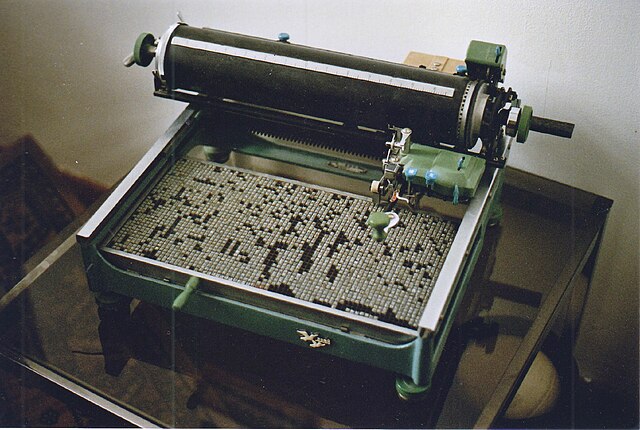Typewriters that can type Chinese characters were first invented in the early 20th century. Written Chinese is a logographic writing system, and facilitating the use of thousands of Chinese characters requires more complex engineering than for a writing system derived from the Latin alphabet, which may require only tens of glyphs. An ordinary Chinese printing office uses 6,000 Chinese characters. Chinese typewriters, and similar Japanese typewriters invented by Kyota Sugimoto, which use kanji adopted from the Chinese writing system, started to appear only in the early 20th century. There have been at least five dozen different models of Chinese typewriter, ranging from sizable mechanical models to sophisticated electric word processors.
A Double Pigeon mechanical typewriter for Chinese from the 1970s. The characters can be assorted on the board and can be picked separately and then typed.
Hou-Kun Chow, inventor of the first Chinese typewriter
A typewriter is a mechanical or electromechanical machine for typing characters. Typically, a typewriter has an array of keys, and each one causes a different single character to be produced on paper by striking an inked ribbon selectively against the paper with a type element. At the end of the nineteenth century, the term 'typewriter' was also applied to a person who used such a device.
Mechanical desktop typewriters, such as this Underwood Typewriter, were long-time standards in government agencies, newsrooms, and offices.
Peter Mitterhofer's typewriter prototype (1864)
The 1969 Olivetti Valentine typewriter, featured in the permanent collections of the Metropolitan Museum of Art, Museum of Modern Art, and Cooper Hewitt, Smithsonian Design Museum in New York; London's Design Museum and Victoria and Albert Museum.
An Elliott-Fisher book typewriter on display at the Historic Archive and Museum of Mining in Pachuca, Mexico






